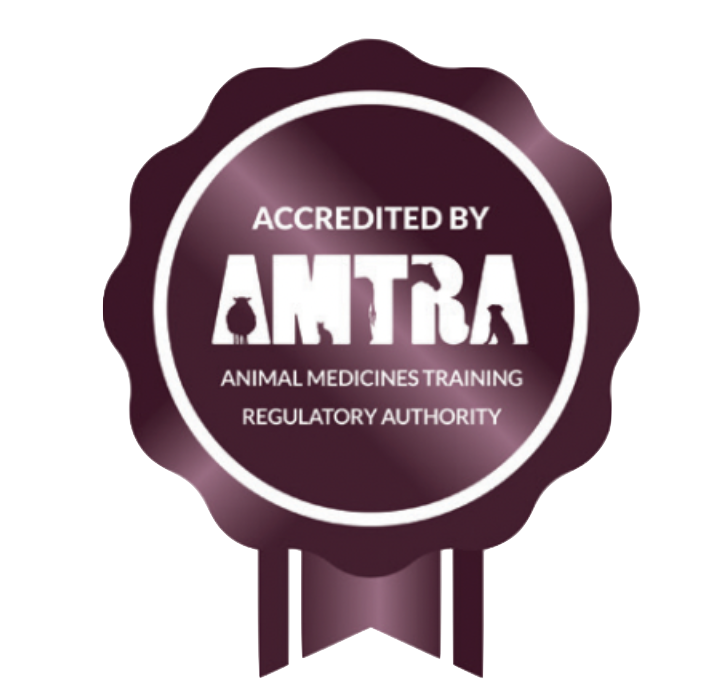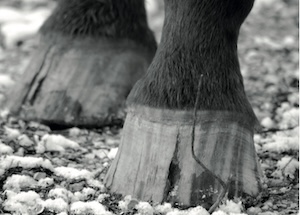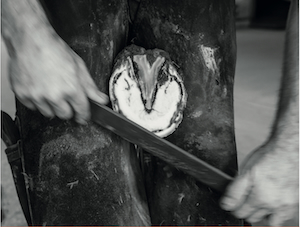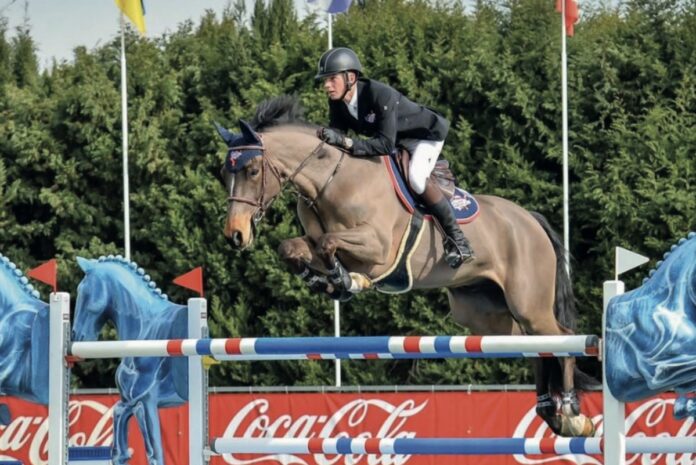NUTRITION FOR THE HOOF
By Dr Kathryn Tuckett BVetMed CertAVP(EP) MRCVS, veterinary technical advisor at Equine America.

AMTRA is required by the Veterinary Medicines Regulations to ensure its RAMAs/SQPs undertake CPD. All RAMAs/SQPs must earn a certain number of CPD points in a given period of time in order to retain their qualification. RAMAs/SQPs who read this feature and submit correct answers to the questions below will receive two CPD points. For more about AMTRA and becoming a RAMA/SQP, visit www.amtra.org.uk
The old saying ‘no foot, no horse’ still holds true and we all know how important hoof condition is for performance and welfare.
A study (Thirkell and Hyland, 2017) found 89% of horse owners had hoof problems (such as abscesses, cracks and bruising) over a five-year period and the majority (95%) were willing to try new hoof products.

Hoof problems have a wide variety of causes, with poor nutrition including vitamin and mineral deficiencies, excesses and imbalances being key.
Other causes include work on hard and dry ground, poor foot hygiene, inadequate hoof care and poor foot confirmation.
For those horses and ponies requiring additional hoof support, a targeted nutritional hoof supplement can be added as part of their balanced diet. With so many hoof supplements on the market it can be a little overwhelming for the horse owner to choose.
What ingredients should they be looking for and what is the evidence behind them? Hoof supplement research is somewhat lacking in recent times, but the information found in the older papers is still considered valid and useful.
BIOTIN
The best known and most researched of all the ingredients found in hoof supplements, biotin (also known as vitamin B7) assists with keratin production and is beneficial for hoof growth and quality.
The recommended serving rate for the average 500kg horse is 15-20mg per day, in hoof specific supplements.
The horse can make its own biotin with the help of the micro-organisms in the hindgut, and healthy horses fed forage-based diets may be able to meet biotin requirements, but any disturbances in the gut microbiota, for example high concentrate diets or antibiotics, will reduce biotin synthesis.
Research studies looking at biotin have found:
- Supplementation with 15mg of biotin per day over a 10-month period achieved increased hoof hardness and greater growth rates than horses supplemented with 7.5mg per day. (Buffa et al., 1992)
- A study on Lipizzaner stallions found 20mg of biotin per day over a 3-year period reduced the severity of hoof horn defects, increased tensile strength and improved the condition of the white line. During this study, some horses took over a year to see an improvement and hoof horn quality continued to improve as the period extended beyond 18 months, highlighting the importance of feeding hoof supplements long-term. (Josseck et al., 1995)
- “Shoeing was easier” and “shoes lasted longer” as there was more strong horn to nail into when fed 15mg biotin in Thoroughbreds and 15-30mg biotin for draft horses. (Comben et al., 1984)
Biotin-only supplements are available on the market, and whilst these are a cost- effective option, it is worth bearing in mind that not all horses are biotin responsive. For most horses, supplementing a combination of key amino acids, vitamins and minerals specifically for the hoof, rather than just a single vitamin alone such as biotin, is likely to be more beneficial.
ZINC AND COPPER
Copper and zinc intake can be very variable in equine diets, therefore supplementing these trace elements will be beneficial if the diet is deficient.
Most of the UK forage is known to be low in copper and zinc. Copper is a key mineral in hoof health as it is involved in the pathway that contributes to structural strength of the hoof. Zinc plays a key role in the keratinisation process.
Research studies have found:
- More white line disease in horses fed long-term diets low in zinc and copper. (Higami, 1999)
- Faster growth rates in horses supplemented with zinc and copper. (Janickova, 2012).
- Lower hoof zinc levels in horses with poor horn quality when compared to normal feet (Coene and Spitzlei, 1997).
CALCIUM
Calcium is only found in low levels in the hoof wall, but it is still important as it is involved in the pathways to create the sulphur cross-links between the hoof proteins and in the cohesion of cells to each other. If calcium levels in the diet are low, then supplying extra calcium may be beneficial for hoof quality as well as bone quality and muscle function.
Limestone flour and alfalfa (lucerne) are good sources of calcium. In the USA, alfalfa is often the predominant forage source so often American supplements may not have sufficient calcium for a typical equine diet in the UK. The recommended calcium:phosphorus ratio is approximately 2:1, this will vary slightly in young stock and broodmares in peak lactation.
SELENIUM
Selenium has a narrow safety margin between requirement and toxic levels, so it is very important not to overdo it.

Signs of toxicity may become apparent in the foot, as the symptoms usually show in keratinised structures (hair and hoof), including hoof rings and cracks near the coronary band, lameness, separation and sloughing of hoof capsule, loss of mane/tail hair.
Grimwood et al. (2016) found owners were giving up to eight supplements per horse. Although lots of supplements are safe to be fed together, adding eight together could potentially lead to toxic levels, and it is recommended that a nutritionist is consulted to formulate a diet plan.
SULPHUR
Sulphur is an important mineral for healthy hooves as it is a component of collagen. Collagen is the protein of connective tissue, which is required in hooves.
A deficiency in sulphur will cause structural weakness in all connective tissue containing structures such as hooves, ligaments and tendons. The highest concentration of sulphur in the horse’s body is found in hoof horn due to its role in keratin.
MSM and methionine provide a bioavailable source of sulphur.
PROTEIN AND AMINO ACIDS
The hoof wall is 93% protein (on a dry matter basis). The hoof horn is made up of the protein keratin, which is high in the sulphur containing amino acids, methionine and cysteine.
Most commercial hoof supplements contain methionine (an essential amino acid, the building blocks of protein) but methionine is just one of the amino acids contained in the protein of the hoof, and deficiencies in any essential amino acid can be detrimental to hoof horn quality (Huntingdon and Pollit, 2003).
Humans use gelatin as a protein source to treat fingernail growth abnormalities, but this isn’t reflected in horses (Butler and Hintz, 1977).
ANTI-INFLAMMATORY SUPPORT AND ANTIOXIDANTS
Fish oils and linseed (aka flaxseed) are particularly high in omega 3s, which are important for overall health and wellbeing, including supporting hoof health and this is a current area of research (Suagee-Bedore et al., 2022).

Fish oils can be quite unpalatable, so linseed oil is often preferred.
Antioxidants neutralise the presence of free radicals. Antioxidants are natural compounds that can be made in the body or found in the diet. Free radicals are unstable molecules that are naturally produced by the body during normal exercise, but excessive free radicals produced during intense exercise, illness and stress can cause oxidative stress and damage to cells.
Antioxidants include vitamin E, vitamin C, as well as other plant-based ingredients such as rosemary and grapeseed.
PROBIOTICS AND YEASTS
The gut microbiome is increasingly recognised to play an important role in metabolic health, including the production of strong, healthy hooves. A disturbed gut microbiome (for example caused by starch overload) can release toxins which can lead to laminitis.
The only legal, live probiotic for equine feed in the UK currently is the probiotic yeast Saccharomyces cerevisiae.
On the label, the live yeast will be listed under Additives and must have cfu (colony forming units) which tells you it is live and the level it is included at.
Brewer’s yeast is an inactive yeast, not a live probiotic, but provides a natural source of B vitamins, which play key roles in hoof, skin and coat health.
PRACTICAL FEEDING ADVICE
How long should a hoof supplement be fed for? Unfortunately, there is no quick fix, and hoof supplements need to be fed for a minimum of nine months to see the full effects, as the average hoof grows at approximately 5-6mm per month, therefore it takes around 9-12 months to grow from the coronary band to the toe. Owners will often notice an improvement in the coat more quickly though.
Targeted nutrition through hoof supplements can be a useful aid to hoof care as part of the balanced diet. Understanding the ingredients found in supplements can help you to make an informed choice as to which is the most appropriate supplement for your customer and their horse.
References
- Buffa et al. (1992) Effect of dietary biotin supplement on equine hoof horn growth rate and hardness. Equine Veterinary Journal (1992) 24 (6) 472- 474.
- Butler and Hintz (1977) Effect of level of feed intake and gelatin supplementation on growth and quality of hoofs of ponies. Journal of Animal Science. Vol 44, Issue 2 (1977), 257-261.
- Comben et al. (1984) Clinical observations on the response of equine hoof defects to dietary supplementation with biotin. The Veterinary Record (1984) 115 (25-26) 642-645.
- Conen and Spitzlei (1997) The composition of equine hoof horn with regard to its quality (hardness) and nutrient supply of horses. Proc. 15th Equine Nutr. Physiol. Symp. 209-212.
- Grimwood, Penaluna and Brown (2016) A preliminary investigation into the mineral intake of horses in the UK. Journal of Equine Veterinary Science 36 (2016) 44-48.
- Higami (1999) Occurrence of white line disease in performance horses fed on low-zinc and low-copper diets. J. Equine Sci. Vol 10, No1, 1-5.
- Huntingdon and Pollit (2003) Nutrition and the Equine Foot. Advances in Equine Nutrition, Volume 3.
- Jancikova et al. (2012) The effect of feed additive containing vitamins and trace elements on the elements profile and growth of skin derivatives in horses. Ann. Anim. Sci. Vol 12, No 3 (2012) 381-391.
- Josseck, Zenker and Geyer (1995) Hoof horn abnormalities in Lipizzaner horses and the effect of dietary biotin on macroscopic aspects of hoof horn quality. Equine Vet. J. (1995) 27 (3) 175-182.
- Suagee-Bedore et al. (2022) Thirty- two weeks of oral supplementation with LinPro increases hoog growth in heatlthy mares. Journal of Equine Veterinary Science 117 (2022) 104086.
- Thirkell and Hyland (2017) A preliminary review of equine hoof management and the client-farrier relationship in the United Kingdom. Journal of Equine Veterinary Science 59(2017) 88-94.

ABOUT ETN’S RAMA/SQP FEATURES
ETN’s series of CPD features helps RAMAs (Registered Animal Medicines Advisors/SQPs) earn the CPD (continuing professional development) points they need. The features are accredited by AMTRA, and highlight some of the most important subject areas for RAMAs/ SQPs specialising in equine and companion animal medicine.
AMTRA is required by the Veterinary Medicines Regulations to ensure its RAMAs/SQPs undertake CPD. All RAMAs/SQPs must earn a certain number of CPD points in a given period of time in order to retain their qualification. RAMAs/SQPs who read this feature and submit correct answers to the questions below will receive two CPD points. For more about AMTRA and becoming a RAMA/SQP, visit www.amtra.org.uk











